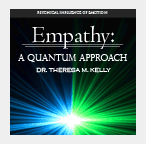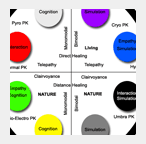Empathy
Parapsychology Articles, Papers and Books
Home > Articles > Psychical Phenomena > Extrasensory Perception > Empathy
![]()
|
| NEWSLETTERS |
| Get the best from QPsychics.com in your inbox! |
|
| PARAPSYCHOLOGY ORGANIZATIONS |
"With confidence in the importance of utilizing the investigative mode of the established sciences in order to inquire into the authenticity and to potentially explain the nature of psychical phenomena."  |
 |
 |
 |
 |
Stages of Empathic Simulation
Empathy is the psychical influence of emotion via experient influence over the emotional basis of consciousness and the mental and physiological processes associated with a wide variety of emotional experiences. In regards to intentional empathic simulation techniques, several stages are assumed to exist through which the empathist shares emotional experiences. During spontaneous (non-intentional) empathic simulation, these processes are assumed to run automatically by the subconscious. However, since the processes are run subconsciously, there is no conscious directive. To obtain a level of conscious direction, the empathist is assumed to require achieving each step in order to perform successfully. Stage 1 of the empathic simulative process involves initiation, i.e. the empathist recognizes his or her need for sharing an emotional experience consciously, and therefore subconsciously. Stage 2 involves physical interaction, i.e. the empathist must physically interact with a subject or group of subjects. Physical interaction is assumed a requirement for any form of tele-empathy. Stage 3 of the empathic simulative process involves psychophysical interaction, i.e. the participant’s measure (i.e. become aware) of the shared emotional information. Physical interaction is achievable via any action through which the empathist and subjects have an effect upon one and other. This two-way effect, or interconnectivity, is assumed essential for empathic simulative processes. Examples of types of physical interaction can include emotional communication between participants of any kind (e.g. talking), electronic medium (e.g. phone, video chat, etc.), close spatial proximity, or direct physical touch.
(Adapted from the book “Empathy: A Quantum Approach - The Psychical Influence of Emotion” by Theresa M. Kelly, MsD.)
|
|||
Related Articles |
|||

